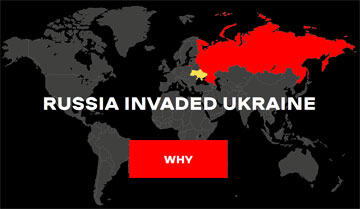Denial of service in NETGEAR Routers
| Risk | Low |
| Patch available | YES |
| Number of vulnerabilities | 1 |
| CVE-ID | N/A |
| CWE-ID | CWE-119 |
| Exploitation vector | Local network |
| Public exploit | N/A |
| Vulnerable software |
CBR40 Hardware solutions / Routers & switches, VoIP, GSM, etc LAX20 Hardware solutions / Routers & switches, VoIP, GSM, etc MK62 Hardware solutions / Routers & switches, VoIP, GSM, etc MR60 Hardware solutions / Routers & switches, VoIP, GSM, etc MS60 Hardware solutions / Routers & switches, VoIP, GSM, etc RBW30 Hardware solutions / Routers & switches, VoIP, GSM, etc R6700v3 Hardware solutions / Routers & switches, VoIP, GSM, etc RAX200 Hardware solutions / Routers & switches, VoIP, GSM, etc RAX75 Hardware solutions / Routers & switches, VoIP, GSM, etc RAX80 Hardware solutions / Routers & switches, VoIP, GSM, etc R6400 Hardware solutions / Routers for home users R6400v2 Hardware solutions / Routers for home users R7000 Hardware solutions / Routers for home users R7000P Hardware solutions / Routers for home users RS400 Hardware solutions / Routers for home users |
| Vendor | NETGEAR |
Security Bulletin
This security bulletin contains one low risk vulnerability.
1) Buffer overflow
EUVDB-ID: #VU73746
Risk: Low
CVSSv4.0: 4.9 [CVSS:4.0/AV:A/AC:L/AT:N/PR:N/UI:N/VC:N/VI:N/VA:H/SC:N/SI:N/SA:N/E:U/U:Clear]
CVE-ID: N/A
CWE-ID:
CWE-119 - Memory corruption
Exploit availability: No
DescriptionThe vulnerability allows a remote attacker to perform a denial of service (DoS) attack.
The vulnerability exists due to a boundary error. A remote attacker on the local network can trigger memory corruption and cause a denial of service condition on the target system.
MitigationInstall updates from vendor's website.
Vulnerable software versionsCBR40: All versions
LAX20: All versions
MK62: All versions
MR60: All versions
MS60: All versions
RBW30: All versions
R6400: All versions
R6400v2: All versions
R6700v3: All versions
R7000: All versions
R7000P: All versions
RAX200: All versions
RAX75: All versions
RAX80: All versions
RS400: All versions
CPE2.3- cpe:2.3:h:netgear:cbr40:*:*:*:*:*:*:*:*
- cpe:2.3:h:netgear:lax20:*:*:*:*:*:*:*:*
- cpe:2.3:h:netgear:mk62:*:*:*:*:*:*:*:*
- cpe:2.3:h:netgear:mr60:*:*:*:*:*:*:*:*
- cpe:2.3:h:netgear:ms60:*:*:*:*:*:*:*:*
- cpe:2.3:h:netgear:rbw30:*:*:*:*:*:*:*:*
- cpe:2.3:h:netgear:r6400:*:*:*:*:*:*:*:*
- cpe:2.3:h:netgear:r6400v2:*:*:*:*:*:*:*:*
- cpe:2.3:h:netgear:r6700v3:*:*:*:*:*:*:*:*
- cpe:2.3:h:netgear:r7000:*:*:*:*:*:*:*:*
- cpe:2.3:h:netgear:r7000p:*:*:*:*:*:*:*:*
- cpe:2.3:h:netgear:rax200:*:*:*:*:*:*:*:*
- cpe:2.3:h:netgear:rax75:*:*:*:*:*:*:*:*
- cpe:2.3:h:netgear:rax80:*:*:*:*:*:*:*:*
- cpe:2.3:h:netgear:rs400:*:*:*:*:*:*:*:*
Q & A
Can this vulnerability be exploited remotely?
Yes. This vulnerability can be exploited by a remote non-authenticated attacker via the local network (LAN).
How the attacker can exploit this vulnerability?
The attacker would have to send a specially crafted request to the affected device in order to exploit this vulnerability.
Is there known malware, which exploits this vulnerability?
No. We are not aware of malware exploiting this vulnerability.
